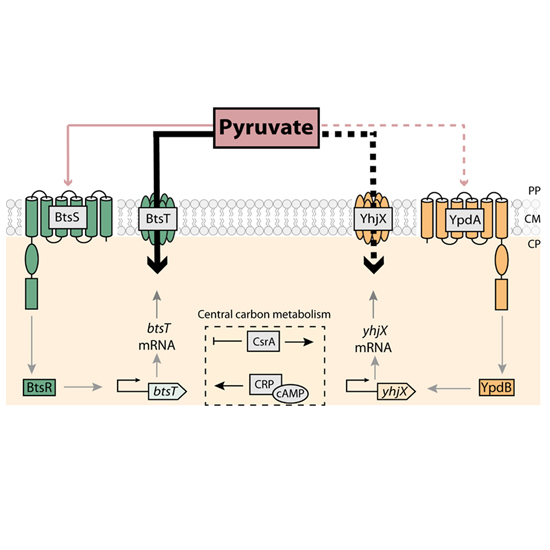Importance of Pyruvate Sensing and Transport for the Resuscitation of Viable but Nonculturable Escherichia coli K-12
11-Jan-2019
Journal of Bacteriology, Volume 201, Issue 3, e00610-18, https://doi.org/10.1128/JB.00610-18
Journal of Bacteriology, online article
Escherichia coli and many other bacterial species can enter into a viable but nonculturable (VBNC) state, which is a survival strategy adopted by cells exposed to adverse environmental conditions. Pyruvate is known to be one factor that promotes resuscitation of VBNC cells. Here we studied the role of a pyruvate-sensing network, composed of the histidine kinase-response regulator systems BtsS/BtsR and YpdA/YpdB and the target gene btsT, encoding the high-affinity pyruvate/H+ symporter BtsT, in the resuscitation of VBNC E. coli K-12 cells after exposure to cold for 120 days. Analysis of the proteome of VBNC cells revealed upregulation, relative to exponentially growing cells, of BtsT and other proteins involved in pyruvate metabolism. Provision of pyruvate stimulated protein and DNA biosynthesis, and thus resuscitation, in wild-type but not btsSR ypdAB mutant VBNC cells. This result was corroborated by time-dependent tracking of the resuscitation of individual VBNC E. coli cells observed in a microfluidic system. Finally, transport assays revealed that 14C-labeled pyruvate was rapidly taken up into VBNC cells by BtsT. These results provide the first evidence that pyruvate is taken up as a carbon source for the resuscitation of VBNC E. coli cells.











